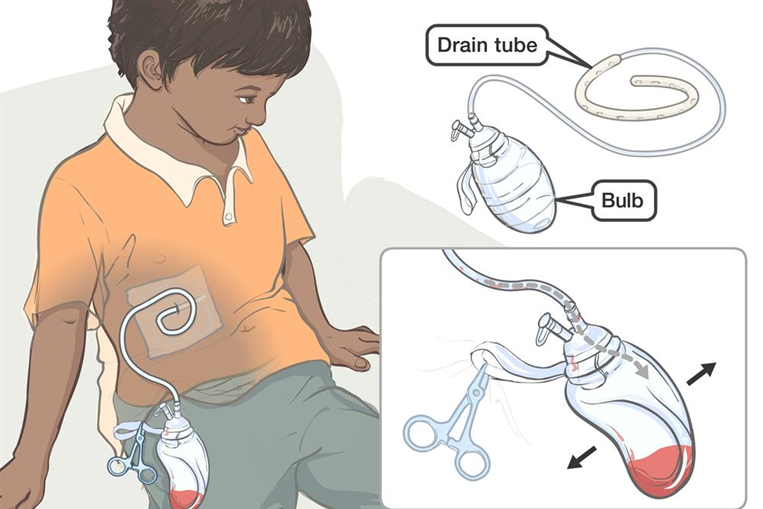A nurse is reinforcing discharge teaching with the partner of a client who requires tracheal suctioning. Which of the following statements by the partner indicates an understanding of the teaching?
"I will wrap the suction catheters in a clean towel to be used again at a later time."
"I will set the suction pressure dial between 80 and 120."
"I will suction for less than 15 seconds while inserting the suction catheter."
"I will suction the mouth before inserting the suction catheter into the tracheostomy."
The Correct Answer is B
Choice A Reason:
The statement “I will wrap the suction catheters in a clean towel to be used again at a later time” is incorrect. Suction catheters should be disposed of after each use to prevent infection. Reusing catheters, even if wrapped in a clean towel, can introduce bacteria into the tracheostomy site, leading to potential infections.
Choice B Reason:
The statement “I will set the suction pressure dial between 80 and 120” is correct. The recommended suction pressure for adults is typically between 80 and 120 mmHg. This range is sufficient to effectively clear secretions without causing trauma to the tracheal mucosa. Setting the suction pressure within this range ensures safe and effective suctioning.
Choice C Reason:
The statement “I will suction for less than 15 seconds while inserting the suction catheter” is incorrect. Suctioning should be performed intermittently and for no longer than 10-15 seconds at a time. However, suctioning should not occur while inserting the catheter. Suction should be applied only while withdrawing the catheter to minimize trauma to the tracheal mucosa.
Choice D Reason:
The statement “I will suction the mouth before inserting the suction catheter into the tracheostomy” is incorrect. Suctioning the mouth before the tracheostomy can introduce oral bacteria into the tracheostomy site, increasing the risk of infection. The correct procedure is to suction the tracheostomy first and then the mouth if needed.
Nursing Test Bank
Naxlex Comprehensive Predictor Exams
Related Questions
Correct Answer is D
Explanation
Choice D: Comparing the reading to the preoperative value is the first action that the nurse should take because it can help determine if the client's blood pressure is normal for them or if it indicates hypotension, which can be a sign of hemorrhage, shock, or infection.
Choice a is not correct because covering the client with a warm blanket is not the first action that the nurse should take, but rather an intervention that can help prevent hypothermia and shivering, which can increase oxygen demand and blood loss.
Choice b is not correct because increasing the IV fluid rate is not the first action that the nurse should take, but rather an intervention that can help restore fluid volume and blood pressure, if indicated by other data and prescribed by the provider.
Choice c is not correct because reassuring the client is not the first action that the nurse should take, but rather an intervention that can help reduce anxiety and stress, which can affect blood pressure and heart rate.
Correct Answer is D
Explanation
Choice A reason: Maintaining the client on bed rest is not an appropriate action, as it can increase the risk of thromboembolism, infection, or atelectasis after surgery. The nurse should encourage early ambulation and exercise as tolerated by the client.
Choice B reason: Decreasing the client's fluid intake is not an appropriate action, as it can cause dehydration, constipation, or impaired wound healing after surgery. The nurse should encourage adequate hydration and nutrition to promote recovery and drainage.
Choice C reason: Applying cold compresses to the site is not an appropriate action, as it can cause vasoconstriction, inflammation, or pain at the site. The nurse should apply warm compresses to the site to facilitate drainage and reduce swelling.
Choice D reason: Placing the right leg in a dependent position is an appropriate action, as it can promote gravity-assisted drainage from the site and prevent fluid accumulation or infection. The nurse should place the drain below the level of the wound and secure it to prevent dislodgment or tension.

Whether you are a student looking to ace your exams or a practicing nurse seeking to enhance your expertise , our nursing education contents will empower you with the confidence and competence to make a difference in the lives of patients and become a respected leader in the healthcare field.
Visit Naxlex, invest in your future and unlock endless possibilities with our unparalleled nursing education contents today
Report Wrong Answer on the Current Question
Do you disagree with the answer? If yes, what is your expected answer? Explain.
Kindly be descriptive with the issue you are facing.
